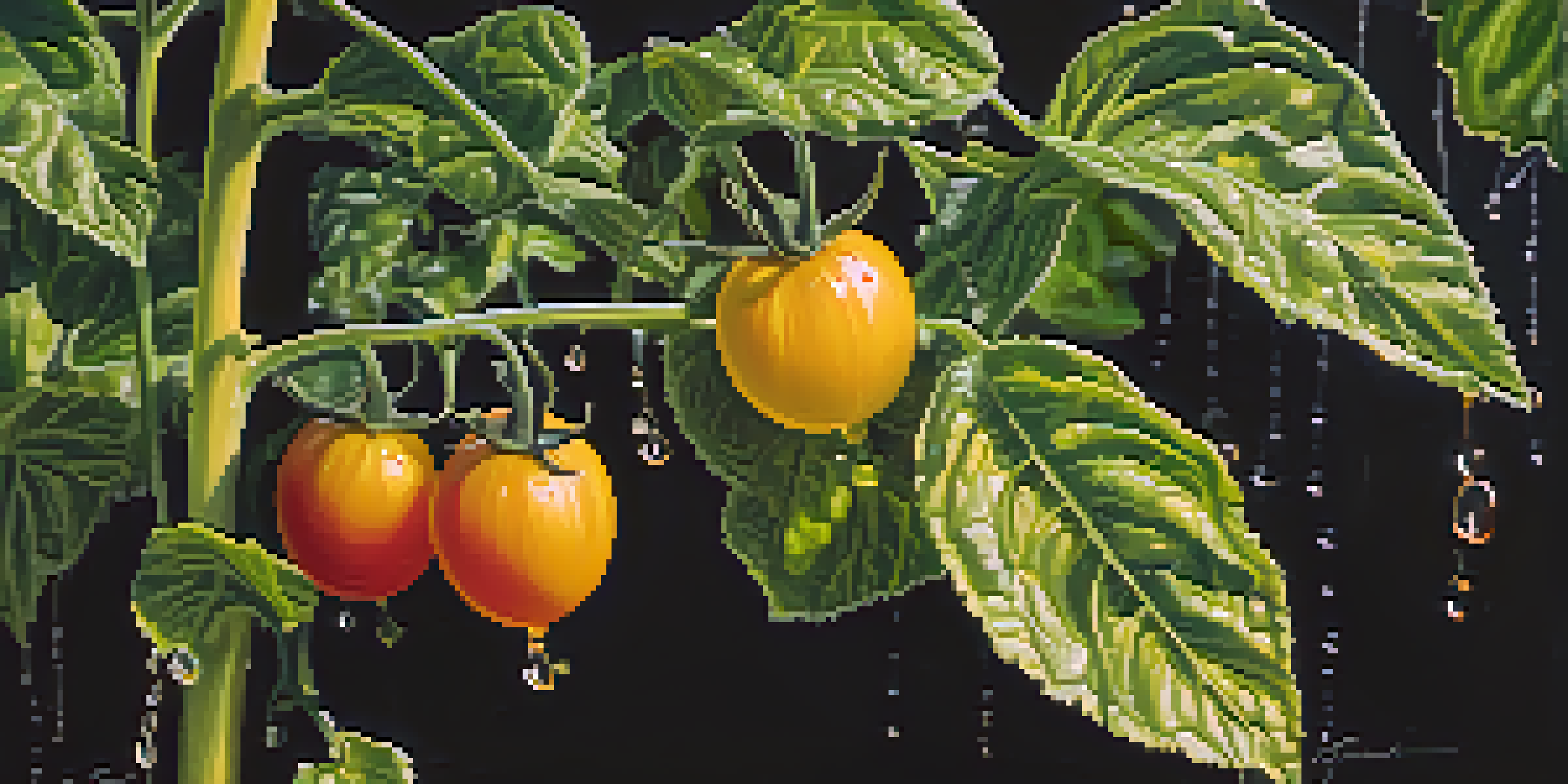Top Symptoms of Bacterial Diseases in Vegetables and Fruits

Understanding Bacterial Diseases in Produce
Bacterial diseases can wreak havoc on our beloved fruits and vegetables, often leading to significant crop losses. Understanding these diseases is crucial for any gardener or farmer looking to maintain healthy plants. The symptoms of bacterial infections can vary widely, but recognizing them early is key to effective management.
Wilting and Yellowing Leaves as Warning Signs
One of the first signs that something is wrong with your plants might be wilting or yellowing leaves. This could indicate a bacterial infection, especially if the leaves appear limp despite adequate watering. For instance, bacterial wilt can cause sudden drooping in plants like tomatoes and cucumbers.
Recognize Bacterial Symptoms Early
Identifying symptoms like wilting, leaf spots, and rotting fruits early is essential for effective management of bacterial diseases.
Spotting Leaf Spots and Blights
Bacterial diseases often manifest as leaf spots or blight, leading to unsightly patches on foliage. These spots may start small but can quickly expand, causing significant damage. For example, bacterial leaf spot in peppers can create dark, water-soaked areas that eventually lead to leaf drop.
Rotting Fruits: A Clear Indicator
Rotting fruits are a telltale symptom of bacterial infections, often making them unappetizing and inedible. This can occur due to bacteria like Erwinia, which causes soft rot in various fruits. When you notice mushy, discolored areas on your produce, it's time to investigate further.
Preventive Strategies Are Key
Implementing proper sanitation, crop rotation, and using disease-resistant varieties can significantly reduce the risk of bacterial infections in your garden.
Stunted Growth and Poor Yield
Stunted growth is another common symptom of bacterial diseases that can leave gardeners frustrated. Infected plants may struggle to grow to their full potential, resulting in lower yields. This is often due to the bacteria disrupting the plant's ability to absorb essential nutrients and water.
Gummy Exudates: A Sticky Situation
If you notice a sticky, gummy substance on your plants, it could be a sign of bacterial infection. This exudate is often a result of bacterial ooze, which can attract other pests and lead to further complications. For example, the bacterial ooze from crown gall can create a sticky mess around the base of infected plants.
Impact on Growth and Yield
Bacterial diseases can stunt plant growth and lower yields, highlighting the importance of early detection and intervention.
Unusual Growths: Tumors and Galls
Bacterial infections can lead to the formation of unusual growths like tumors or galls on plants. These abnormal growths can disrupt the normal physiology of the plant, impacting its health and productivity. Crown gall, caused by Agrobacterium, is a notable example that can be particularly damaging.
Preventing Bacterial Diseases in Your Garden
Effective prevention strategies can significantly reduce the risk of bacterial diseases. Maintaining proper sanitation, rotating crops, and using disease-resistant varieties are all proactive steps you can take. Regular monitoring for symptoms and early intervention can also make a big difference in keeping your garden healthy.